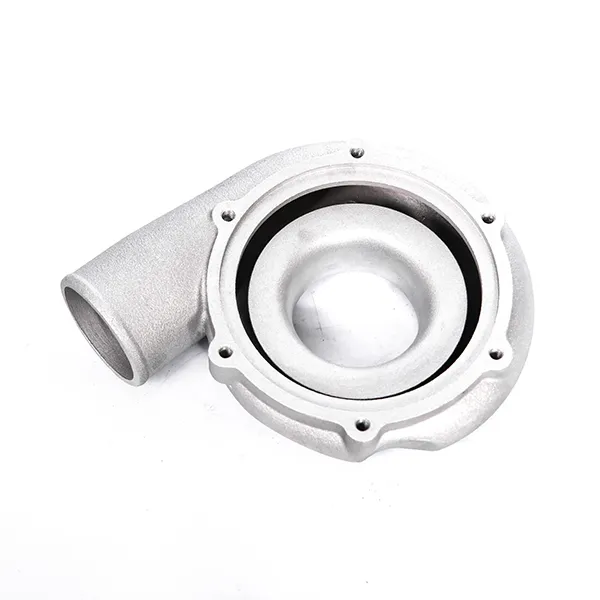Mobile:+86-311-808-126-83
Email:info@ydcastings.com
ls cast manifolds
Understanding LS Cast Manifolds A Comprehensive Overview
In the realm of automotive engineering and aftermarket performance parts, the term LS cast manifolds often comes up in discussions about performance upgrades for vehicles equipped with GM's LS engine family. The LS engines, known for their power, efficiency, and lightweight design, have spawned a vast aftermarket community, leading to numerous enhancements and customizations, including cast manifolds. This article delves into the significance of LS cast manifolds, their advantages, their construction, and their impact on vehicle performance.
What are LS Cast Manifolds?
LS cast manifolds, specifically designed for the LS series of engines, encompass two primary types intake manifolds and exhaust manifolds. These components play critical roles in managing airflow into and out of the engine, which directly affects engine performance, efficiency, and sound.
1. Intake Manifolds The intake manifold directs air (and fuel) into the engine’s cylinders. An effective intake manifold can improve air distribution, optimize engine breathing, and increase horsepower. Cast intake manifolds are typically made from high-quality aluminum, providing a combination of durability and heat dissipation properties.
2. Exhaust Manifolds On the other hand, exhaust manifolds route exhaust gases away from the engine, minimizing back pressure to enhance performance. LS cast exhaust manifolds are engineered to withstand high temperatures and offer improved exhaust flow, thus reducing turbo lag in forced induction setups.
Benefits of LS Cast Manifolds
The use of cast manifolds offers several advantages over their stamped or fabricated counterparts
- Durability Cast iron and aluminum manifolds can withstand high temperatures and pressures, making them less prone to warping or cracking under extreme conditions compared to other materials.
- Improved Performance LS cast manifolds are designed to enhance airflow, contributing to better throttle response, increased power output, and improved fuel efficiency. The precise design allows for even distribution of air and exhaust gases, which is crucial for optimal engine performance.
- Weight Savings While cast iron manifolds are heavier than their stainless steel or tubular equivalents, aluminum cast manifolds provide a good compromise between weight and strength, which can contribute to an overall reduction in vehicle weight.
- Aesthetic Appeal Many enthusiasts appreciate the clean, polished look of cast manifolds
. They can be painted or coated for additional customization, enhancing the visual appeal of the engine bay.ls cast manifolds

Construction of LS Cast Manifolds
The manufacturing process of LS cast manifolds typically involves several key steps
1. Design Engineers use advanced computer-aided design (CAD) software to create models that optimize airflow and thermal properties. This phase often includes extensive simulation and testing.
2. Casting High-quality aluminum or ductile iron is melted and poured into molds to create the desired manifold shape. This process allows for intricate designs that would be difficult to achieve through other manufacturing methods.
3. Finishing Once the casting has cooled, it undergoes machining processes to ensure proper fitment and finish. This may include ports, mounting holes, and surfaces that need to be flat to ensure a tight seal.
4. Testing and Quality Control Finally, cast manifolds are subjected to rigorous testing to check for structural integrity, performance characteristics, and overall fit and finish.
The Impact of LS Cast Manifolds on Vehicle Performance
Upgrading to LS cast manifolds can make a significant difference in a vehicle’s performance. For street enthusiasts and racing applications alike, these components allow for more efficient air and exhaust flow, reducing restricting factors that can impede an engine's potential.
Optimizing airflow with high-performance cast manifolds can lead to quicker throttle response and increased horsepower, addressing the needs of both casual drivers and hardcore racers. Moreover, paired with appropriate tuning, these manifolds can elevate an LS engine’s power to new heights, showcasing why they are often considered an essential modification in LS engine builds.
Conclusion
In summary, LS cast manifolds represent a critical aspect of optimizing performance for vehicles utilizing GM’s LS engine family. With their robust construction, efficiency-enhancing designs, and aesthetic qualities, they serve as vital upgrades for anyone looking to extract every bit of performance out of their LS-powered ride. Whether on the street or the racetrack, investing in high-quality cast manifolds can yield impressive improvements, highlighting their significance in the automotive performance landscape. As the aftermarket for LS engines continues to grow, cast manifolds remain a staple for enthusiasts looking to modify and enhance their vehicles.
-
Impeller Technology That Powers Precision in Pump SystemsNewsMay.22,2025
-
Valve Durability Begins with Quality Cast Iron ComponentsNewsMay.22,2025
-
Performance Cooling with Advanced Automobile Water Pump SolutionsNewsMay.22,2025
-
How Motor Housing and Oil Pans Shape Engine PerformanceNewsMay.22,2025
-
How Metal Castings Drive Modern Manufacturing EfficiencyNewsMay.22,2025
-
Exploring the Engineering Behind Valve Body CastingsNewsMay.22,2025











